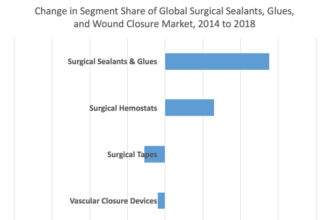Americans are expected to spend nearly $70 billion on plastic surgery this year. The figure is growing, partly due to the greater benefits of using technology to make plastic surgery more effective.
Plastic surgery is one way for a person to improve body features by making corrections to dysmorphic body parts. While there are some risks of plastic surgery, they are outweighed by the benefits. This could include a compromised body part because of an injury or accident that has been scarred or misshapen. This type of surgery has been in practice for centuries, from the time of the Egyptians till date, and has been slowly evolving.
Why has it only been witnessing slow growth and evolution?
Well, this is because of people’s skepticism about the practices, considering the risks involved and the way the outcome of the surgery might end up looking. This skepticism made the practice seem dormant. However, this changed with the intervention of technology in the plastic surgery industry.
The influence of technology in plastic surgery has been of great benefit. By digitally transforming it through the creation of Artificial Intelligence, Augmented reality, telemedicine and robotics. All these technological advancements have made the procedures in the plastic surgery industry quicker and easier, unlike the olden days when surgeons could not quickly do some operations, not to mention the increased risks when complications arise.
Nowadays, technology has made it possible to perform that operation and achieve the required outcome, and even some practices that were thought impossible are being performed now.
According to Dr. Pirani, digital transformation has dramatically improved the plastic surgery industry by manufacturing physical operating equipment, scheduling surgical teams, accounting in surgical institutions, and more. It has also enabled doctors and patients to have a visual picture of the outcome of the surgeries and the type of method to be applied. Plus, precision (knowing which area to focus on) creates a better patient environment. Making it safer and more popular due to the increasing trust and belief in the possibilities of plastic surgery worldwide.
Ways in Which Digital Transformation Has Supported the Plastic Surgery Industry
- Morphing feature: The primary purpose of plastic surgery is to give a person a beautiful appearance. Now, take, for instance, the face; when an individual is not satisfied with the aesthetic features on the face and desires more improved features, going to a plastic surgeon gives the possibility of seeing what the face would look like with the given features the individual wants.
How? Well, using morphing feature apps, for example, to show how a smaller nose looks. Hence, if the desire is for liposuction to acquire bigger boobs or buttocks, the morphing features show you how it would look on you. These morphing features are also available on an app like Instagram or Tiktok in the form of picture filters, giving you the illusion of the appearance desired. This makes people more open to plastic surgery. Still, the surgeon requires your approval before the surgery process commences if the outcome is surgically attainable.
You should discuss the terms of the surgery and the processes involved in the operation, and the surgeon should try as much as possible to brief you on the essentials going into the process.
- Artificial Intelligence: Digital transformation has created AI, which has been and will continue to benefit plastic surgery institutions greatly. AI involvement in plastic surgery has made it indispensable to the growth and future of plastic surgery because of how influential it has become.
Firstly, AI has created machines that give precision and accuracy during surgery. The American Society of Plastic Surgeons has stated that augmented reality is playing a huge role in the plastic surgery profession. These machines’ ability to predict prognosis and diagnose the type of procedure to be taken to reach the desired outcome is an asset for plastic surgeons., It also helps to identify the various risks involved, like burns and scarring, and also to be able to identify patients with bodily dysmorphic syndrome.
AI inventions include laser surgeries where the patient is passed through the machine. The machine runs a scan telling the surgeon the skin type while recommending the laser’s intensity.
- Identifying body dysmorphic syndrome: This psychological problem makes people feel unattractive because they feel part of their body looks awkward or undesirable, expecting it to look a certain way.
Digital transformation helped doctors deal with that problem because sometimes a patient comes with a picture of their ideal look showing it to the surgeon with demands to look that way. AI has made it possible to tell them if it is possible in practice or if that part of the body they want to adjust is the main problem.
Digital Technology is Changing the State of Plastic Surgery
Digital transformation has enhanced the plastic surgery field, making it safer and easier. With these new technologies, recovery can be made in the privacy and comfort of your home, and you can rest assured that more advancements in the industry will help it reach greater heights.









